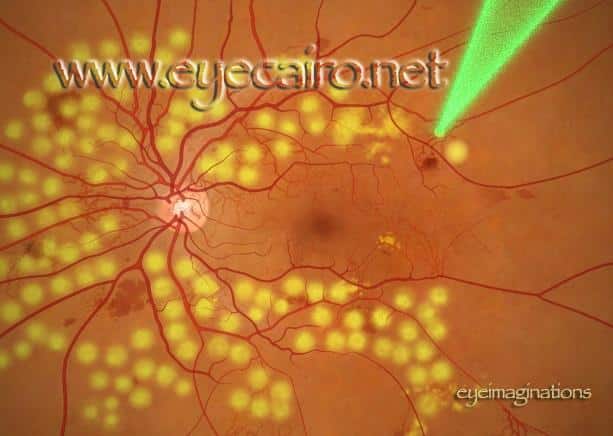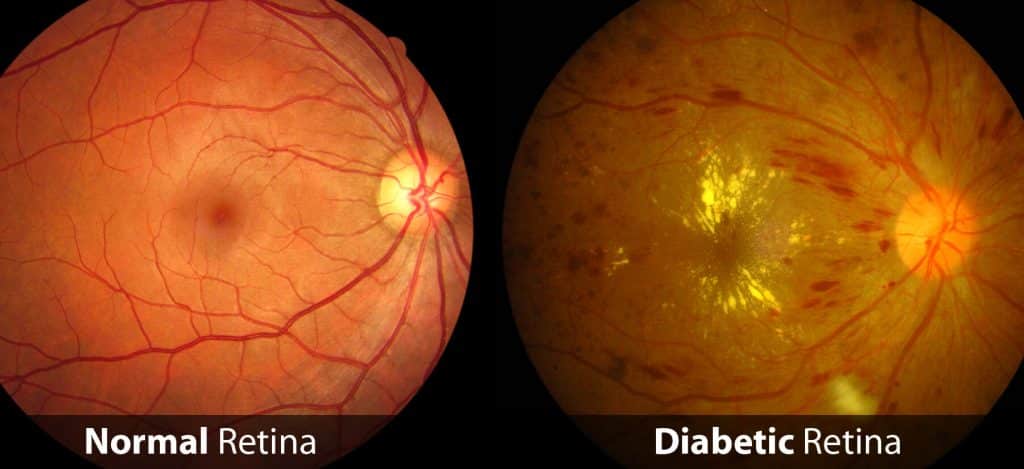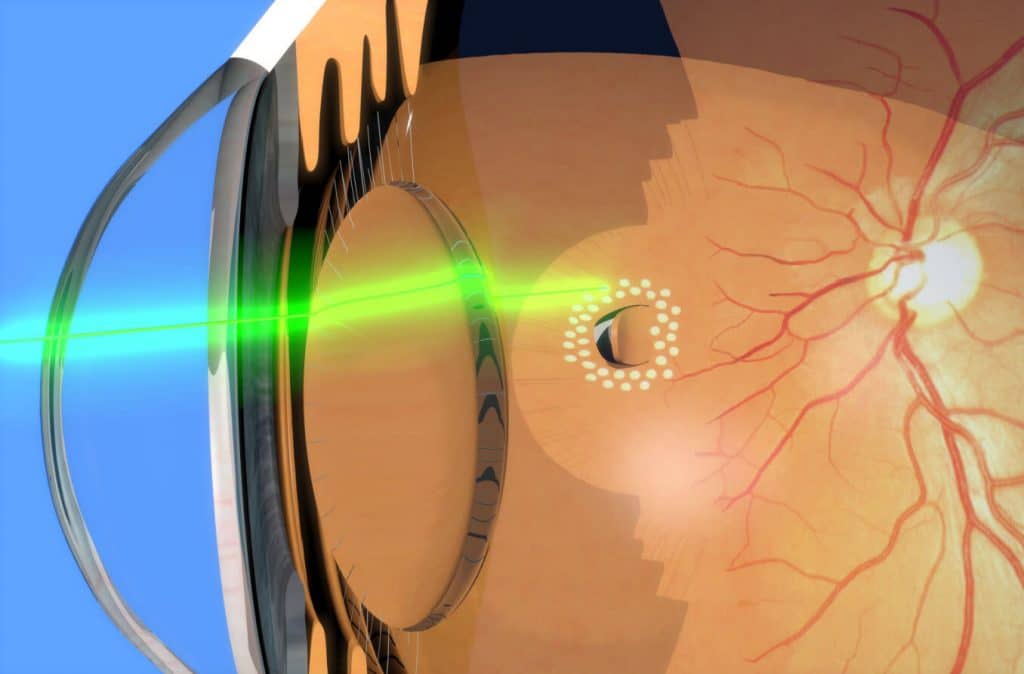Laser Treatment of the Retina
Retinal Laser

The laser is an instrument that produces a pure, high-intensity beam of light energy. The laser light can be precisely focused onto the retina (the light sensing tissue at the back of the eye), selectively treating the desired area while leaving the surrounding tissues untouched. The absorbed energy creates a microscopic spot to destroy lesions or weld tissues together.
Retinal laser treatment is a painless Out Patient procedure, lasting about 10-30 minutes. It may require more than one sesion to complete the treatment. In most of the cases, the aim of laser treatment is to try to prevent further loss of vision. It can not regain the vision already lost due to retinal disease. After the laser treatment, the patient may require to undergo repeat Fluorescein Angiography at a later date to monitor the response, and may require more laser if indicated.
Retinal laser for the treatment of diabetic retinopathy

Diabetes milletus can damage small vessels of the retina, causing them to leak fluid and blood. These changes decrease vision if the central part is affected. Laser is used to seal these leaks. However laser is done to prevent or retard further loss of vision and not to improve vision. In severe changes when new blood vessels have grown (Proliferative Diabetic Retinopathy), multiple sessions of laser are needed to produce the desired effect. This is called Pan Retinal Photocoagulation and together with intravitreal injections, is highly effective in preventing severe visual loss.
In some cases with cataracts, cataract surgery may be done first to allow for best possible laser treatment. Neglecting laser treatment in cases with diabetic retinopathy can lead to more severe complications including glaucoma
Retinal laser for the treatment of holes and tears in the retina

In a retinal tear or a hole without a retinal detachment, laser is done prophylactically to seal the hole and prevent or limit the incidence of retinal detachment.
Age related macular degeneration
In patients with wet type of AMD not involving the central part, laser can be done to close the Choroidal Neovascular Membrane. This can prevent severe visual loss. However in patients with central involvement, other specific techniques involving injections of special materials in the eye to prevent furtherr proliferation, and stop existing ones.
Retinal vein occlusions
In venous occlusions, the central retina may swell up due to fluid collection leading to reduced vision. Such cases require laser to decrease the swelling, which may help in improving the vision, and guard against glauocma. Venous occlusions may also lead to new vessel formation that might cause glacuoma 9eye pressure rise), Laser causes these vessels to regress.







